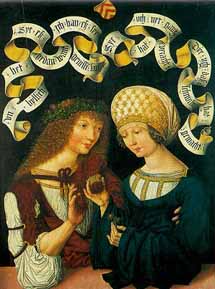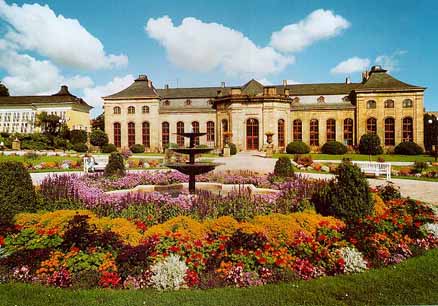Friedenstein Castle in Gotha, Germany The city of Gotha was first mentioned in writing in a document from Karl der Grosse (Charlemagne) in the year 775, when it was named "villa gotaha." Karl der Grosse was the first emperor of the Holy Roman Empire; he was crowned on Christmas day in 800. Karl der Grosse visited Gotha, which was included in his empire, known as the first German Reich, and slept there at least one night. Gotha is dominated by a huge park in the center which surrounds the 17th century Schloss Friedenstein, the largest early Baroque castle and grounds in all of Germany. The triple-wing building was designed by an architect named Rudolphi and its construction required the work of 1,000 craftsmen and laborers. Until the end of World War I, Gotha was the home of the Dukes of Saxe-Coburg-Gotha, the family from which today's British royal family is descended through Prince Albert who married England's Queen Victoria. The family changed its name to Windsor during World War I when the British were circulating atrocity stories about the German soldiers who were allegedly "cutting off the hands of babies in Belgium."  In the Schlossmuseum at Gotha, there are many fine examples of medieval and renaissance art, including the famous painting called "Gothaer Liebespaar" (Gotha Lovers) which dates back to 1484 and is the oldest painting with two people in one picture. The painting is by a German artist known as "The Master of the Housebook." The museum also includes artwork by the famous Lucas Cranach, whose home still stands on one side of the town square below the Castle. The first theater in Germany to have permanently employed actors, the Gothaer Hoftheater, was founded in 1774 by the actor Konrad Ekhof. Today a theater named after him, the Ekhof Theatre, is located in the west tower of the castle. It is the oldest baroque theater in Europe, featuring historic stage equipment which dates back to 1681.  In the 18th century, Gotha became the center of the German Enlightenment as a result of Voltaire taking up residence there. Goethe, who was also prominent in the Enlightenment, visited Gotha while still a student. Gotha is pronounced GO-duh, and Goethe is pronounced GERD-uh. The Orangerie is a large beautiful building situated in the northeast corner of the Schloss Park in the heart of Gotha. It was once used by the Saxe-Coburg-Gotha family and is one of the palace buildings. It has two pavilions, one of which is a library and the other is a cafe. Orangerie is the generic term for a building with lots of large windows facing south, which was formerly used by royalty to house orange trees planted in large pots. The trees were set outside in summer, but were kept in the building in winter. A similar Orangerie is now used as a tea house for tourists at the Keningston Palace in London. The landscape park around the Orangerie was originally laid out in 1770. A landscape park is one which features broad open vistas with views of classic buildings set among lakes and flowers.  History of GothaHome |